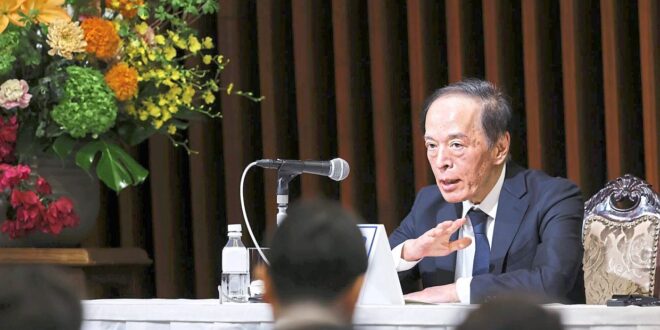TOKYO: Japan’s 10-year government bond yield rose to an 11-year high of 1% amid mounting bets for further Bank of Japan (BoJ) policy tightening this year, while a weak auction of 40-year debt added to the pressure for higher yields.
The 10-year Japan government bonds (JGB) yield was last 1.5 basis points (bps) higher at 0.995%, retreating slightly after touching 1% for the first time since May 2013, in the very early days of former BoJ governor Haruhiko Kuroda’s unprecedented policy-easing experiment.
The benchmark yield has climbed as much as 27.5 bps since the end of March, the month that current governor Kazuo Ueda lifted interest rates for the first time since 2007.
“If rate expectations are going to increase, Japanese government bond yields across the curve, particularly for the 10-year, are going to rise more,” said Shoki Omori, chief Japan desk strategist at Mizuho Securities.
“The 10-year yield may go as high as 1.2% in the coming weeks.”
Superlong JGB yields also surged after a poorly received sale of 40-year bonds, with the bid-to-cover ratio, a closely watched indicator of demand, dropping to 2.21 from 2.49 at the prior offering in March.
The 40-year yield jumped 3.5 bps to 2.52%. The 30-year yield surged 5.5 bps to a 13-year peak of 2.14%, and the 20-year yield climbed 4 bps to 1.83%, a level last seen in March 2012.
Ueda suddenly adopted a more hawkish tone two weeks ago, as the weakest yen in 34 years risked derailing a virtuous cycle of mild inflation supporting higher wages.
The gaping US-Japan yield differential has kept the yen depressed despite expectations for Federal Reserve rate cuts this year, in contrast to the BoJ’s fledgling tightening cycle.
Following a meeting with Prime Minister Fumio Kishida on May 7, Ueda said the BoJ will be “vigilant” to yen moves in setting policy.
A day later, he said the BoJ may raise rates if the currency’s drop affects prices significantly.
The central bank then surprised markets a week ago by cutting the amount of JGBs it offered to purchase in a regular buying operation, sparking bets that quantitative tightening may not be far off.
Analysts at ANZ said in a client note they expect the BoJ to raise its policy rate by 15 bps at its next meeting in mid-June, then follow with a 25 bps hike in October.
At the short-end of the JGB curve, which is more sensitive to monetary policy expectations, the two-year yield rose 0.5 bps to 0.345%, matching a 15-year high reached on Tuesday of last week.
The five-year yield added one bp to 0.585%, a level not seen since February 2011.
“I am not surprised that long-term interest rates have reached 1%, given the clear prospect of further rate hikes in the near future, as well as the increasing likelihood of a significant reduction in the massive long-term JGB purchases that have previously suppressed the rise in long-term interest rates,” said Ryutaro Kimura, fixed-income strategist at AXA Investment Management.
“It is likely that the 1% long-term interest rate will be nothing more than a milestone.” — Reuters
 BeritaKini.biz Berita Viral Terkini di Malaysia
BeritaKini.biz Berita Viral Terkini di Malaysia





